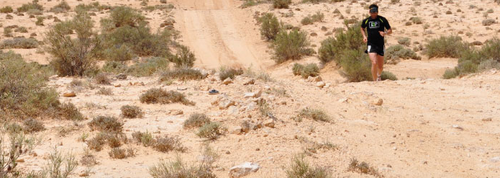
Stretching over 1000 kilometers south from Chileβs northern border is the driest place on earth, the Atacama Desert. It's a high lifeless plateau with areas so arid that rain hasnβt been recorded since record keeping began.
Defined by meteorologists as an absolute desert, the Atacama sits in the rain shadow of both the Andes and the Chilean Coast Range and is uniquely affected by coastal inversions to make it the driest, most sterile place on the planet.
This daunting landscape, a place so devoid of life that NASA deems it a terrestrial-double for a Martian world, is the backdrop for our upcoming i2P 2011 βOn the Trail of the Chasquisβ expedition.
On January 19th, 2011 and I will attempt to run the length of Chileβs βrainlessβ Atacama Desert – a distance of over 1100kms (680 miles) β averaging over 2 full-length marathons per day. We will be following in the footsteps of ancient Incan ultra-running messengers, known as the Chasquis, who navigated the paths and trails of this unforgiving landscape some 500 years ago.
In the early 13th century the Inca civilization began its rise in the highlands of Peru and for the next 100 years would control much of western South America including the Atacama. One of the primary reasons for the Incan dominance was their ability to maintain an effective communication system throughout the thousands of kilometers of their empire. They did this by using highly trained ultra-running athletes called Chasquis who would relay messages throughout the realm at a seemingly unbelievable pace of up to 400kms per day (250 miles). The runners were faster and more reliable than all other forms of transport and became so essential to the region that the conquering Spaniards would still use the Chasquis system into the 1800s.
Over the coming weeks Ray and I will be running countless kilometers through the Atacama Desert exploring the mysterious lost world of the Chasquis. We will be making regular blog postings with photos and video to ΊΪΑΟ³ΤΉΟΝψ as make our journey across the Atacama.
—